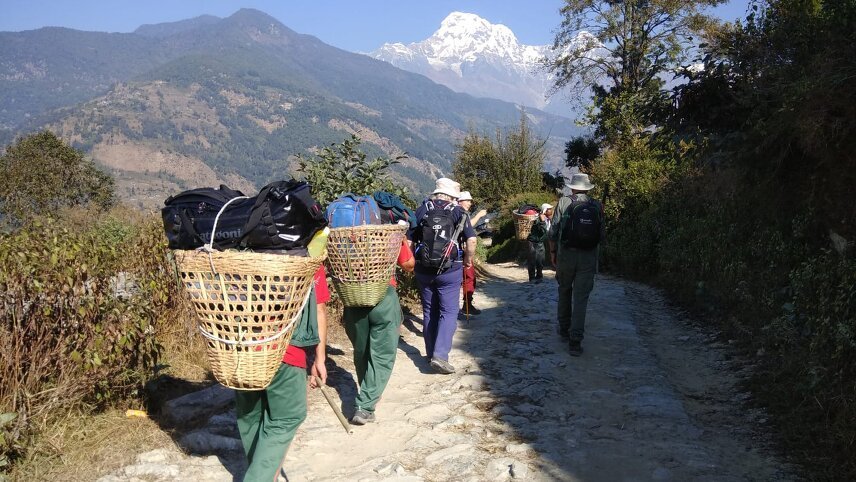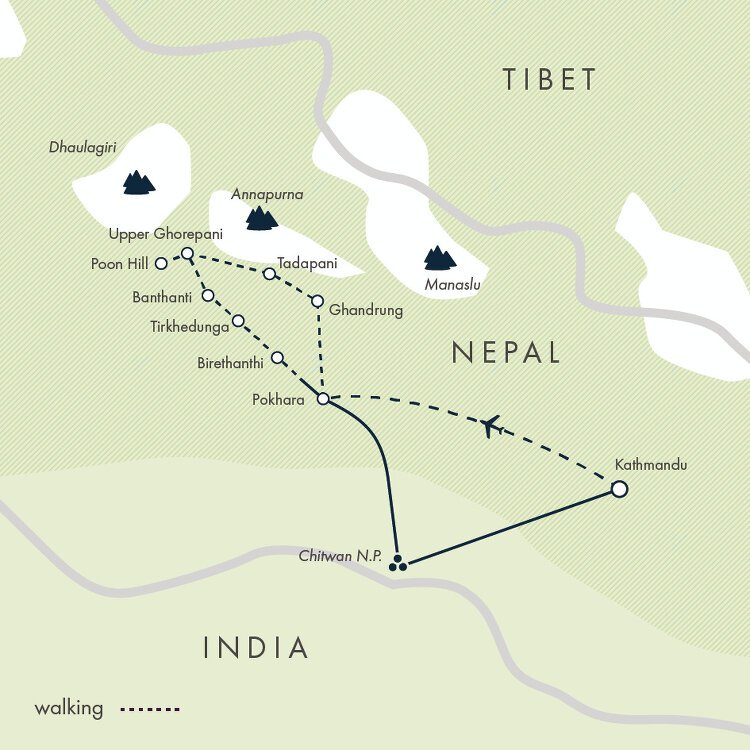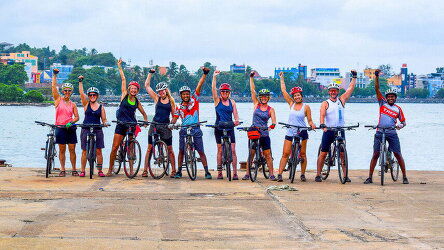Overview
Itinerary
The tour starts at the Hotel Ambassador in Kathmandu. There will be a full trip briefing this evening with your leader and a chance to meet your fellow travellers. If you have free time after arrival, you may want to relax into the adventure with a drink at the in-house rooftop bar and lounge Foreign Affairs, with it's 360 degree views from the sun terrace over Kathmandu valley. Stay: Hotel Ambassador (or similar).
We take a 30-minute flight to the city of Pokhara this morning, which allows us to bypass a long, bumpy, uncomfortable drive and maximise our time in the Himalaya. On a clear day, we get magnificent views of those same mountains from the right side of the plane. From the airport, we drive for 1hr 30min to Birethanthi, a riverside village at the confluence of the Modi Khola and the Burundi Khola.
After a lunch stop here, we begin our hiking in the Annapurna massif with a two to three-hour warm-up walk that follows a jeep track past the small village of Hille and into another small village, Tirkhedunga, where we spend our first night in a teahouse. Stay: Teahouse (sleeping altitude: 5,050ft/1,540m) (B).
Today is short in distance but quite tough as we are ascending all day. There is a long, fairly steep climb up a stone staircase through the neatly terraced hillsides to the village of Ulleri. Many of the trails in this area are stone steps made many years ago to prevent erosion. Don't worry though, there are many resting places and teahouses on the way up so we just take it slowly and stop for a refreshing cup of tea en route. Continuing through Ulleri, we stop tonight at lower Banthanti. Stay: Teahouse (sleeping altitude: 7,250ft/2,210m) (B).
Today our trail winds onward and enters a rhododendron forest. In spring, the forest is ablaze with colour and, as we walk, trains of mules provide colourful and noisy interludes to the continuous ascent (there are many stone staircases today). Finally, we emerge at Ghorepani, a splendid mountain vista appearing before us – Dhaulagiri, Annapurna, Hiunchuli, Machhapuchhare, Lamjung and other Himalayan giants. We continue up through Ghorepani to our lodge in Upper Ghorepani, usually arriving by lunchtime. Stay: Teahouse (sleeping altitude: 9,515ft/2,900m) (B).
We get up early this morning for our walk to Poon Hill (our highest altitude point at 10,530ft/3,210m). The early wake up will be worth it when we see the spectacular sunrise views of the Annapurnas, Annapurna South, Hiunchuli, Nilgiri, Tukuche Peak, Dhaulagiri, Machhapuchhare and Lamjung. The trail to Poon Hill takes just under an hour and is up a stone staircase. Descending back to the lodge, we have a well-deserved breakfast and then set off for the village of Tadapani.
We head east back into the forest and ascend to the Deurali Pass at 10,140ft (3,090m). We then descend into the rhododendron forest through Deurali, where there are a few lodges, and further down to Banthanthi for lunch. After lunch, the trail undulates on a rocky trail through the forest with a final climb up to Tadapani, where we stay tonight with magnificent views of Annapurna South and Machhapuchhare. Stay: Teahouse (sleeping altitude: 8,630ft/2,630m) (B).
After wonderful sunrise views of Annapurna South and Machhapuchhare from the lodge, we descend through the forest to the Bhaisi Kharka area. We eventually emerge from the forest and see the large Gurung village of Ghandrung spread below. It is the largest of the villages in this area and new lodges have been built around the traditional Gurung houses. We reach the lodge by lunchtime; in the afternoon, we can explore the village. There is a small Gurung museum that shows how the traditional houses once were. From the lodge, we can relax and take in the wonderful views of Annapurna South, Hiunchuli and Machhapuchhare. Stay: Teahouse (sleeping altitude: 6,365ft/1,940m) (B).
We end our Himalayan journey today trekking through farmland and forest down to the Modi Khola valley and onto Birethanthi, where we meet our transport for the 1hr 30min drive back to Pokhara. The afternoon is free to enjoy this lakeside town. There are plenty of shops selling Tibetan handicrafts and restaurants along the lakeside to explore. Stay: Hotel Dahlia (or similar) (B).
This morning, we head to the Tibetan refugee camp in Tashiling, a 15-minute drive out of Pokhara. Established in 1964, when hundreds of Tibetans fled instability in their home region, the Tashiling camp is now a permanent home to around 100 families. You meet some of the residents and take part in a cookery experience, learning how to make the popular Nepalese snack momos, which originated from Tibet and was introduce to Nepal by the refugees.
Before leaving, you have a chance to look around the local carpet handicraft centre, souvenir shops and Tibetan traditional food shops with any purchases directly supporting the community. We also have an optional visit to the International Mountain Museum in the afternoon, which delves deep into the history of mountaineering across the planet or maybe take some time to stroll by or perhaps even a boat trip on the lake. Stay: Hotel Dahlia (or similar) (B).
We leave Pokhara this morning (with magnificent Annapurna views on clear days) and embark on a four to five-hour drive to Chitwan. Along the way, we are accompanied, in parts, by the Marsyangdi and Trishuli rivers. The road heads towards Kathmandu for about 56mi (90km) before turning south to Chitwan National Park. We should arrive around lunchtime; this afternoon, we meet our naturalist guide who will go over the activities for the next two days followed by a bird walk late afternoon in the local area. Stay: Jungle Lodge (B/L/D).
Today is dedicated to discovering the wildlife of Nepal and exploring the jungle in Chitwan. In the morning, we take a traditional dugout canoe made from a single tree trunk along the Rapti River, our naturalist guide helping us to spot birdlife and crocodiles as we gently cruise on the water. After lunch, we head out from our resort on a jeep safari through Chitwan National Park.
Along the way, we keep our eyes peeled for several deer species, wild boars, endangered one-horned rhinos and the very rare Bengal tiger. Our certified guides are typically local to the park, often from the indigenous Tharu community, who have a long history of living in close harmony with the nature of the Chitwan region. Their knowledge of the local ecosystem, animal behaviour and traditional practices makes them excellent nature guides.
This evening, we watch a Traditional Stick Dance performance, an important part of Tharu culture. The dance is performed by members of the Tharu community, who use long sticks to create an engaging, energetic performance. It is believed to have originated as a means of protecting the Tharu communities from various threats, including wildlife and evil spirits, and is now a celebration of Tharu identity and a way to preserve and showcase their cultural heritage to visitors. Please note, the order we do activities is decided by the naturalist depending on local factors. Stay: Jungle Lodge (B/L/D).
This morning, you have the option to rise early and head out before breakfast for a bird-watching walk in the Bagmara Community Forest, around a five to 10-minute stroll from our resort, joined by a naturalist guide. Then, after a leisurely breakfast, we set off for the five-hour drive back to Kathmandu arriving in the evening.
Our journey takes us out of the lowlands to travel once more alongside the Trishuli River, before arriving at the Himalaya foothills. Taking a Chinese-built road running parallel to the range, the journey slows as we pass through the hilly region. Our reward, however, is plenty of amazing Himalaya views encompassing terraced farms, numerous villages and the adjacent Trishuli River.
Upon arrival in Kathmandu, we typically have time to refresh before dinner. Stay: Hotel Ambassador (or similar) (B).
For those keen to see the highest mountain in the world, there is the option of an early morning Everest sightseeing flight from Kathmandu. This can be booked and paid for locally with help from your leader. Today is also your chance for sightseeing in the capital. A local Guide will escort you on a city tour, visiting one of the largest Buddhist stupas in the world at Boudhanath, and the most important Hindu temple in the valley at Pashupatinath. Stay: Hotel Ambassador (or similar) (B).
The trip comes to an end after breakfast. However, if you'd like a little more time to explore Kathmandu, speak to your sales representative about extending your stay (B).
Trip Inclusions
- Enjoy sunrise at the Poon Hill summit with views of majestic peaks
- Experience traditional culture in the Gurung village of Ghandrung
- Relax with a post-trek stay in the lakeside city of Pokhara
- Visit a Tibetan refugee village and learn how to make traditional momo dumplings
- Join an expert naturalist for a wildlife-watching adventure in Chitwan National Park
- Ride a dugout canoe down the Rapti River in search of crocodiles
- 7 Classic nights (5 hotel, 2 jungle lodge), 5 Simple nights (teahouses)
- Travel by air-conditioned private bus and one internal flight
- Six days of walking with full porterage
- Good introduction to Himalayan walking
- All breakfasts, two lunches and two dinners
- Tibetan village with momo cooking experience
- Mountain Museum entrance (Pokhara)
- Dugout canoe ride and jeep safari (Chitwan)
- All transport and listed activities
- One internal flight
- Free arrival and departure transfers for everyone
- Trekking permit and national park fees
- Itinerary and inclusions are subject to change
- Price is for land, cruise and internal flights as specified. Flights not specified are not included
- Low altitude throughout (maximum altitude: Poon Hill summit at 10,531ft/3,210m)
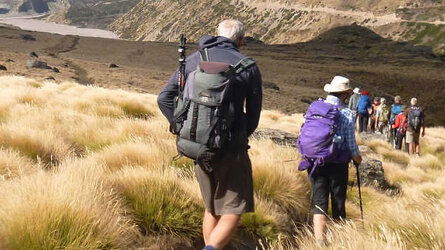
Hit the trails with Exodus - from challenging peaks to leisurely coastal and countryside walks. Read more
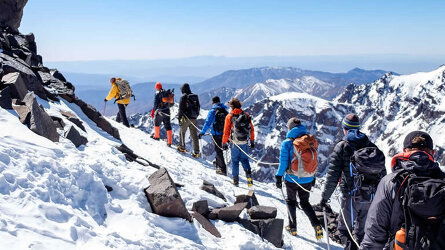
Exodus chooses their Leaders carefully. Professional, dedicated and are passionate about sharing their home countries. Read more
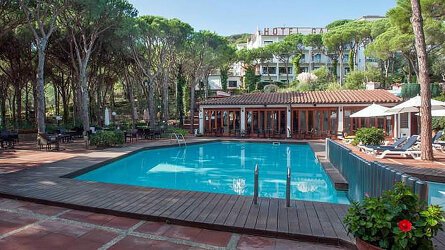
Wherever possible, Exodus chooses properties that are locally owned and that reflect the area you are visiting. Read more
Availability
 USD
USD
A definite departure means minimum numbers have been reached for this departure to operate. Your Global Journeys Travel Advisor will check the availability of your departure date when you enquire. Additional savings may apply. T&C’s apply.
Tour & cruises prices are per person. Prices shown have savings applied, are subject to availability and may be withdrawn at any time without notice. Pricing and trip details are correct at this point in time, however are subject to confirmation at the time of booking and are subject to change by Exodus. For cruise itineraries, cabin images are sourced from Exodus. These should be treated as indicative only. Cabin inclusions, upholsteries and room layout may differ to the image(s) shown depending on the ship selected and your sailing dates.
